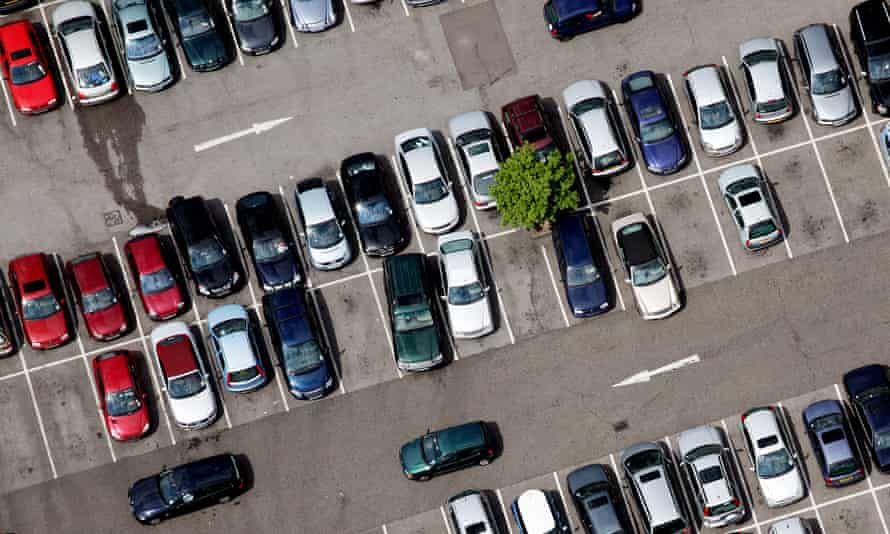Extract from The Guardian
Labor says audit office has uncovered ‘ineligible projects, rampant under-delivery and political targeting’

An Australian National Audit Office report finds the Coalition’s commuter car park program selection process was ‘not designed to be open or transparent’.
Last modified on Mon 28 Jun 2021 17.45 AEST
Not one of the 47 commuter car park sites promised by the Coalition at the 2019 election was selected by the infrastructure department, with projects worth $660m handpicked by the government on advice of its MPs and candidates.
That is the conclusion of a scathing Australian National Audit Office report released on Monday, which found that the department’s administration of the program was “not effective” and identification of projects “was not demonstrably merit-based”.
The infrastructure department has rejected the conclusions, arguing it was entitled to give funding to projects selected by the government and promised as election commitments.
The ANAO found that the department had been involved in drawing up an “indicative” list of projects in November 2018, but then the office of the urban infrastructure minister, Alan Tudge, asked it to add potential projects to its spreadsheet and a column for the government to set its relative priority.
“The minister’s office advised that it would then go through the spreadsheets with the prime minister’s office and the deputy prime minister’s office, ahead of a related meeting between the minister for urban infrastructure and the prime minister,” it said.
The ANAO found that projects had been identified in part through ministers’ offices canvassing the views of 23 Coalition MPs, senators and the Coalition candidates for six electorates then held by Labor or Centre Alliance.
The department’s approach to selecting commuter car park projects “was not appropriate” – as projects had been selected by the government on a “non-competitive, non-application based process”, it said.
Advice to the minister “did not include an assessment of the project”, the ANAO found. “It did not include advice on project feasibility, costs, risks or value for money. There was no information provided on the need for additional parking bays at the proposed sites.”
The ANAO concluded that the process for election projects was “not designed to be open or transparent”.
Nationally, 77% of the car parks were in Coalition-held electorates and a further 10% were in the six non-Coalition held electorates where candidates’ views were canvassed.
One car park in a Labor-held electorate 300 metres from a boundary was incorrectly recorded in the project selection documents and the department’s system as being located in the neighbouring Coalition electorate. Its funding was announced by the federal Coalition MP.
Some 64% of the projects were in Melbourne, 2.5 times the number in Sydney, despite Infrastructure Australia rating Sydney’s roads as the busiest. Most of the Melbourne sites skewed towards the south-east, not the most congested roads in the north-west.
In Victoria, Coalition electorates were twice as successful as Labor electorates at winning funding – with seven of the 11 eligible Coalition electorates scoring funding (64%) compared with five of Labor’s 16 (31%).
The most successful electorates were Goldstein (six projects), Deakin (five projects), Kooyong (four projects) and Banks (four projects), all Coalition-held. Labor’s seat of Lindsay, a key marginal won by the Coalition, received three projects.
Of the 47 commuter car park sites, construction has been completed on just two sites and started in three more. Just $76.5m of the program’s funding, 12% of the amount committed, has been spent so far.
Two projects were cancelled in December 2019 just months after they were announced, one project was later found to be ineligible and four other were cancelled in May 2021.
Some 11 projects worth $175m have had no assessment work – meaning “a project proposal had not yet been received from the identified proponent”, the report said.
The ANAO said the department had undertaken “insufficient assessment work” to satisfy itself that the projects were eligible for funding under the National Land Transport Act.
It rejected the department’s conclusion that the majority of the projects had been selected as election commitments, noting that 27 had been approved before the government went into caretaker mode.
The ANAO found that sites had been approved by the government between January and July 2019. Some 38 were effected in a written agreement between the prime minister to a request from ministers, seven announced as election commitments and two for which the department could not show a funding commitment “beyond email advice from the minister’s office and a media announcement by the prime minister”.
The shadow urban infrastructure minister, Andrew Giles, said the ANAO had uncovered “ineligible projects, rampant under-delivery, the political targeting of projects and secret spreadsheets shared between the then-minister and the prime minister’s office”.
“This is sports rorts on steroids,” he said. “There isn’t a single fund that this government is not determined to rort.”
The infrastructure department rejected the ANAO’s finding its controls were ineffective, arguing that it was entitled to treat the 34 projects announced in the election as election commitments and therefore subject to less rigorous selection criteria.
The department agreed to all six of the ANAO’s recommendations, including that in future it “develop an implementation plan, performance indicators and an evaluation strategy specific to the funding program” and provide advice based on merit criteria.
The urban infrastructure minister, Paul Fletcher, who took carriage of the program in December 2020, defended the program, writing to the ANAO that two-thirds of the projects had been announced during the election campaign and the Coalition had been “elected to deliver them”.
“The remainder were decisions of cabinet, as has been standard practice for major transport infrastructure decisions under successive governments,” he said.
Fletcher argued that states other than Victoria and Melbourne’s north-west had been served instead by public transport funding announcements.
No comments:
Post a Comment